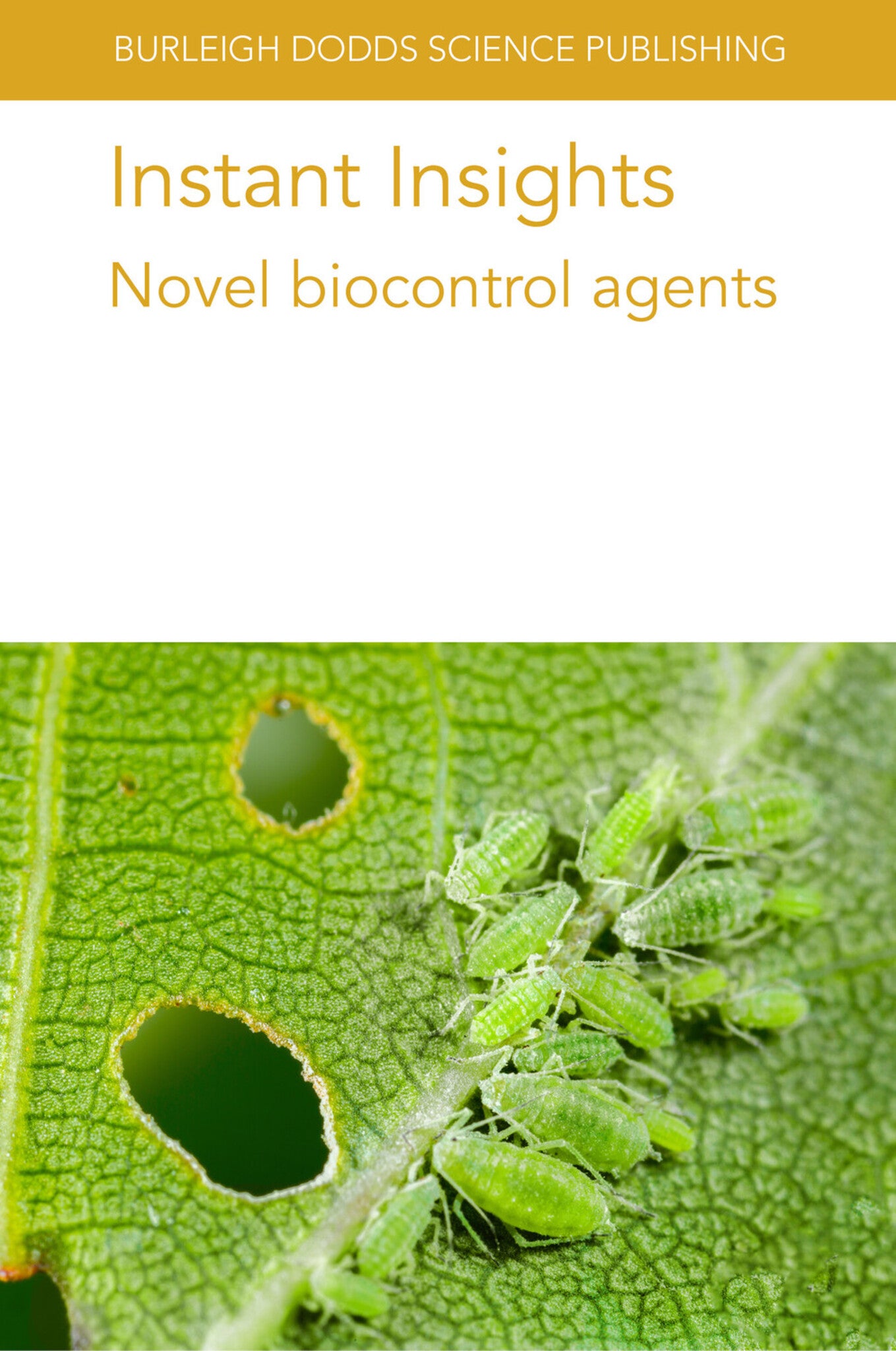We're sorry. An error has occurred
Please cancel or retry.
Instant Insights: Novel biocontrol agents

Some error occured while loading the Quick View. Please close the Quick View and try reloading the page.
- Format:
-
16 December 2025

This book features five peer-reviewed reviews on the development and use of novel biocontrol agents. The first chapter provides an overview of the development of botanical pesticides and focusses on the potential of essential oils in replacing traditional synthetic products. A case study on the use of essential oils as a plant-based biocontrol agent in black truffle cultivation is also included.
The second chapter identifies some of the common issues faced by regulators in assessing risks of microbial and biochemical pesticides as well as dsRNA pesticides. It also discusses problems related to identification, exposure analysis and hazard testing
The third chapter reviews advances in the use of entomopathogenic viruses as biopesticides in suppressing crop insect pests, focussing on RNA viruses such as tetraviruses and reoviruses and DNA viruses such as Parvoviridae, Poxviridae, Nudiviridae and Baculoviridae.
The fourth chapter considers the various types of allelochemicals, their possible use as part of an integrated pest management (IPM) toolkit, constraints to their use, as well as how these challenges can be overcome.
The final chapter reviews the future evolution of IPM and identifies the ways modern agriculture has disrupted plant defences and the control of pests by their natural enemies.

TECHNOLOGY & ENGINEERING / Pest Control, Pest control / plant diseases, TECHNOLOGY & ENGINEERING / Agriculture / Agronomy / General, TECHNOLOGY & ENGINEERING / Agriculture / Sustainable Agriculture, SCIENCE / Life Sciences / Zoology / Entomology, Sustainable agriculture, Agronomy and crop production, Insects (entomology)

- Chapter 1 - Developing plant-based insect biocontrol agents: Daniel Tapia Garcia, Maria Fe Andres and Azucena Gonzalez-Coloma, Consejo Superior de Investigaciones Científicas (CSIC), Spain;
- 1 Introduction
- 2 Developing biocontrol techniques: the case of insect pests in black truffle orchards
- 3 Biocontrol strategies for control of Leiodes cinnamomeus in black truffle orchards
- 4 Plant-based biocontrol agents: the use of essential oils
- 5 Assessing the effects of essential oils on insect pests: the case of L. cinnamomeus
- 6 Conclusion
- 7 References
Chapter taken from: Glare, T. and Jehle, J. (eds.), Advances in biocontrol of crop insect pests, Burleigh Dodds Science Publishing, Cambridge, UK, 2025, (ISBN 978 1 80146 839 8)
- Chapter 2 - The synergism of biocontrol and plant resistance: a path to advance IPM to higher levels of integration: Marcos Kogan, Oregon State University, USA;
- 1 Introduction
- 2 Agriculture at the dawn of the twenty-first century and the surge of pest problems
- 3 Crop-plant domestication and the breakdown of plant defenses
- 4 Crop-plant domestication and the disruption of natural controls
- 5 Restoring resistance in modern varieties while retaining productivity and enhancing biological control
- 6 Host selection by arthropod pests and their natural enemies
- 7 Plant defenses against arthropod pests and their natural enemies
- 8 Achieving higher levels of IPM integration: exploring the synergism of plant resistance and biological control
- 9 Pome fruit IPM in the Pacific NW: steps toward higher levels of integration
- 10 Conclusion and future trends
- 11 Acknowledgements
- 12 Where to look for further information
- 13 References
Chapter taken from: Glare, T. and Jehle, J. (eds.), Advances in biocontrol of crop insect pests, Burleigh Dodds Science Publishing, Cambridge, UK, 2025, (ISBN 978 1 80146 839 8)
- Chapter 3 - Improving regulation of biocontrol agents for insect pests: Shannon Borges and Mike Mendelsohn, U.S. Environmental Protection Agency, USA;
- 1 Introduction
- 2 Biopesticide data requirements and problem formulation for risk assessment
- 3 Characterizing the active ingredient: biochemical pesticides
- 4 Characterizing the active ingredient: microbial pesticides
- 5 Challenges with exposure analysis: human health
- 6 Challenges with exposure analysis: non-target organisms
- 7 Improving guidance on use and labeling
- 8 Challenges with hazard testing: mammals
- 9 Challenges with hazard testing: non-target organisms
- 10 Risk assessment of double-stranded RNA (dsRNA) pesticides
- 11 Case study: non-target organism testing
- 12 Conclusion
- 13 Disclaimer
- 14 References
Chapter taken from: Birch, N. and Glare, T. (eds.), Biopesticides for sustainable agriculture, Burleigh Dodds Science Publishing, Cambridge, UK, 2020, (ISBN 978 1 78676 356 3)
- Chapter 4 - Advances in the use of entomopathogenic viruses as biopesticides in suppressing crop insect pests: Martin Erlandson, Agriculture and Agri-Food Canada, Canada;
- 1 Introduction
- 2 RNA viruses
- 3 DNA viruses
- 4 Conclusion
- 5 Where to look for further information
- 6 References
Chapter taken from: Birch, N. and Glare, T. (eds.), Biopesticides for sustainable agriculture, Burleigh Dodds Science Publishing, Cambridge, UK, 2020, (ISBN 978 1 78676 356 3)
- Chapter 5 - Possible use of allelochemicals in integrated pest management (IPM): Toby Bruce, Keele University, UK;
- 1 Introduction
- 2 Allelochemicals for pest management
- 3 Botanical pesticides
- 4 Repellents
- 5 Attractants
- 6 Defence activators
- 7 Overcoming barriers to improve use of allelochemicals in integrated pest management (IPM)
- 8 Conclusion
- 9 Where to look for further information
- 10 References
Chapter taken from: Kogan, M. and Heinrichs, E. A. (eds.), Integrated management of insect pests: Current and future developments, Burleigh Dodds Science Publishing, Cambridge, UK, 2019, (ISBN 978 1 78676 260 3)



